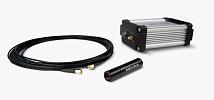Editor
- FMA
- The Fabricator
- FABTECH
- Canadian Metalworking
Automation as augmentation
Keynote panelists at MM Expo reflect on how technology augments the people power in the shop
- By Rob Colman
- May 19, 2022
At the recent Metalworking & Manufacturing Expo (MM Expo) held in Abbotsford March 29, keynote panelists discussed shop-floor automation as technology that augments rather than replaces the work that people do.
Panelist Leigh Christie, founder of MistyWest, a Vancouver-based engineering design company focused on intelligent and connected devices, explained how edge computing has made this iteration of automation possible.
“Edge computing basically describes how large amounts of computational power are built into devices themselves, so they don’t have to send information to a server or the cloud and process that data,” he explained. “It creates automation with lower latency and higher privacy, and it can do a lot more stuff. It's essentially augmenting your brain with another brain right next to you. That trend is not going to stop.”
Cobots are a perfect example of edge computing, but with the use of AI in more and more machines, they are just the tip of the iceberg.
“What’s very clear is that if you don’t embrace that aspect of automation, for sure you’re going to be left behind,” said Christie.
Conversely, the sophistication of such technology, in Christie’s mind, means we need to think more deeply about the human/machine interface.
“That frontier of what edge computing can do keeps pushing deeper and deeper,” he said. “The sooner we have a good idea of what humans do better than robots—and there have been counterintuitive answers to that—the better we’ll understand what we should be focusing education on for the future.”
Fabricators are already wrestling with part-flow options that they didn’t necessarily have before because of the sophistication of modern fab machinery. For instance, choosing between executing more bends on a part or making more welds may not be as straightforward a decision as it once was, depending on a shop’s welding and press brake technology. Now, the introduction of cobots adds another wrinkle. Can the cobot take care of one aspect of assembly, perhaps, to manage repetitive strain concerns? Does breaking a task into smaller segments counterintuitively speed up the process as a whole?
Ultimately, it’s about working smarter, and empowering employees to recognize opportunities to improve their work processes at the same time.
FABTECH Canada is a great opportunity to see some of these technologies up close. You’ll have a chance to catch up with equipment manufacturers and distributors on all the latest advancements that you haven’t had a chance to see for several years in Toronto June 14-16. We hope to see you there!
subscribe now


Keep up to date with the latest news, events, and technology for all things metal from our pair of monthly magazines written specifically for Canadian manufacturers!
Start Your Free SubscriptionAbout the Author

Rob Colman
1154 Warden Avenue
Toronto, M1R 0A1 Canada
905-235-0471
Robert Colman has worked as a writer and editor for more than 25 years, covering the needs of a variety of trades. He has been dedicated to the metalworking industry for the past 13 years, serving as editor for Metalworking Production & Purchasing (MP&P) and, since January 2016, the editor of Canadian Fabricating & Welding. He graduated with a B.A. degree from McGill University and a Master’s degree from UBC.
- Trending Articles
Aluminum MIG welding wire upgraded with a proprietary and patented surface treatment technology

Hypertherm Associates partners with Rapyuta Robotics

Protected and productive: welding helmet tech

HGG Profiling Equipment BV names Western Canada area sales manager

Compact weld camera monitors TIG, plasma processes

- Industry Events
Automate 2024
- May 6 - 9, 2024
- Chicago, IL
ANCA Open House
- May 7 - 8, 2024
- Wixom, MI
17th annual Joint Open House
- May 8 - 9, 2024
- Oakville and Mississauga, ON Canada
MME Saskatoon
- May 28, 2024
- Saskatoon, SK Canada
CME's Health & Safety Symposium for Manufacturers
- May 29, 2024
- Mississauga, ON Canada
















